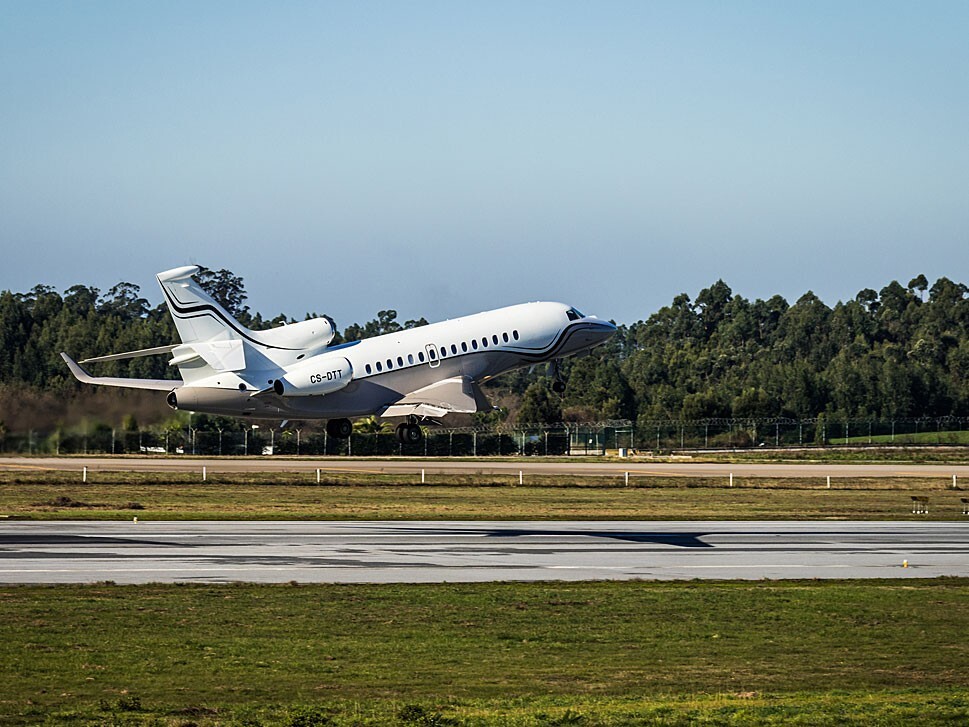- 12 Dec 2022
- Gerrard Cowan
- Finance - BizAv
Part 91 & 135 Ops: Aircraft Financing Differences
If you’re considering financing a private jet that you’ll also make available for charter, how could Part 135 operations impact the terms of the loan you’re offered? Gerrard Cowan asks the experts...
Back to Articles
In the US, private jet users and those operating their aircraft for commercial use are governed by different rules, known as Part 91 and Part 135 respectively. What does this mean for operators when it comes to financing their aircraft, and how could it affect their plans?
It is possible that the financing structure will differ between the two, mainly because the aircraft will be serving different purposes, according to Keith Hayes, Senior Vice President and National Sales Manager for PNC Aviation Finance.
A Part 135-structured aircraft, for instance, may experience heavier use, with its primary purpose being third-party chartered flights, whereas Part 91-focused financed aircraft will primarily be leveraged for the buyer’s private, or company use. “Lenders consider the different ways the aircraft will be used when developing the financial structure,” Hayes adds.
“So, for instance, a Part 135 aircraft could have a lower residual value because it will have a more aggressive amortization due to potential additional wear and tear that the plane may experience.”
Steve Day, Head of Sales for the Americas at Global Jet Capital, says that since the operational profile of the subject aircraft is significantly different between a solely Part 135 and solely Part 91 platform, the financing terms and conditions would likely be “materially different”, perhaps with shorter terms and higher rates depending on the strengths of the underlying obligor/creditor.
“While the aircraft is considered a critical use, revenue-producing asset for the Part 135 operator, it is generally viewed as a business support asset for the Part 91 operator – the Part 91 operator generally has alternatives and will quickly exit the aircraft in times of crisis for various reasons,” Day distinguishes. “It’s a different underwriting approach.”
How do Loan Restrictions Differ?
When financing an aircraft that is intended to be operated for both Part 91 and Part 135, there could be restrictions on the maximum number of hours it can be operated under Part 135, as well as annual caps overall, Day says.
“There are also required operator reviews and supporting documentation, allowing for the operational control of the aircraft for charter purposes, via a charter addendum,” which allows a lessee to have third-party management and charter operation of the aircraft.
Since the terms might be more conservative for an aircraft intended to be primarily operated under Part 135, the debt/lease service, coupled with operating expenses, could be higher than the charter revenue produced at times, Day notes. “That might impact the owner’s ability to have free cashflow generated from the Part 135 operations.”
If the aircraft is on a Part 135 certificate and usage will be for anyone other than the owner or their business, financing could be impacted, explains Adam Meredith, President of AOPA Aviation Finance.
Nevertheless, there are sometimes occasions where borrowers prefer to have their aircraft maintained to “Part 135 standard” but are not seeking to charter the aircraft out. In this type of scenario, financing should be no different than if it were flown under part 91, Meredith says.
In general, though, those looking at charter usage should expect some combination of lower advance rates on the loan, a shorter amortization period and term, and a higher interest rate, he explains.
“Additionally, many lenders will limit the total hours flown in a year, requiring additional principal reduction in the event the airplane is over on hours,” Meredith says. “We also frequently will see a requirement for the aircraft to be enrolled and maintained on an engine maintenance program.”
According to Wendy Preston, Senior Vice President and Asset Manager for PNC Aviation, the primary restriction that owners are likely to see with a Part 135 aircraft is a cap on how many hours they can fly. “Owners would need to consider how many hours they’d like to use the aircraft relative to the percent of charters they’d like to do.”
There could also be a condition for a tri-party agreement between the owner, charter company and third-party customer, she adds. “This agreement would govern rights to the aircraft ensuring all appropriate measures, such as Know Your Customer rules, are being followed in the operation of the aircraft.
“This type of agreement could also ensure the owner has first rights to the aircraft, and all aircraft use is subject to their discretion.”
Additionally, owners should be aware that if they leverage their aircraft as a Part 91 platform, their lender or financial institution might restrict their flying hours. “Their hourly operating plans are going to be more limited than that of a Part 135 aircraft,” Preston notes.
“While this may feel limiting in today’s marketplace, it may prove less so as we move into a different economic climate, as there typically isn’t as much demand for private charters in a downturn.”
Be Upfront About Charter Intentions
Perhaps the most important piece of advice is to let your finance partner know of your intentions up front, Meredith advises.
Some financing sources will not allow for Part 135 operations, adds Day, though there are also some that will underwrite for the aircraft being operated solely under Part 135. Most are somewhere in between, he adds. “Check to be sure of the terms and conditions, as well as the restrictions associated with putting your aircraft on a Part 135 certificate prior to making your financing decisions.”
A National Aircraft Finance Association (NAFA) spokesperson advises that Part 135 operators or aircraft operators who plan to use their aircraft in a commercial capacity could find a smaller network of lenders.
“Part of this is due to the historically higher default rate of commercial operators, and part is the additional wear and tear that commercial-use aircraft experience due to their higher utilization profiles.
“Collateral lenders, credit unions and even some mainline lenders may steer away from commercial operations that do not fit in their core lending profile or credit box.”
The spokesperson also points to a possible demand for higher down-payments, shorter terms, and in some cases annual utilization monitoring for Part 135 or commercial operations. “Lenders will typically try to measure the planned utilization against the terms but will also often track the utilization to make sure the aircraft is not operating in a different model.”
Clients would do well to ask about the difference in terms for Part 91 versus Part 135/commercial use from each lender, NAFA’s spokesperson suggests. “It would be prudent to expect a higher down-payment and shorter term and plan accordingly with the budget,” they explain.
“Notwithstanding the potential higher costs of insurance for commercially operated aircraft, a client would also want to consider the additional maintenance costs with the Part 135 infrastructure, and also contemplate higher hourly reserves to account for higher utilization and wear and tear.”
Hayes summarizes that the biggest piece of advice is to choose your financial partner carefully, as well as third-party advisors like attorneys or brokers. “Having trusted advisors that specialize in business aircraft and have a vast knowledge of potential pitfalls will aid in successfully navigating this process,” he says.
“It’s also critical that potential buyers or current owners share their vision for how they’d like to leverage the aircraft with lenders ahead of time – that’s the only way to ensure your financing structure and terms and conditions are right for you.”
More information from:
AOPA Finance: https://finance.aopa.org
Global Jet Capital: www.globaljetcapital.com
National Aircraft Finance Association: www.nafa.aero
PNC Aviation Finance: www.pnc.com
Read more aircraft finance articles on AvBuyer
Related Articles
- 07 Oct 2022
- Gerrard Cowan
- Finance - BizAv
- 07 Mar 2022
- Chris Kjelgaard
- Finance - BizAv


